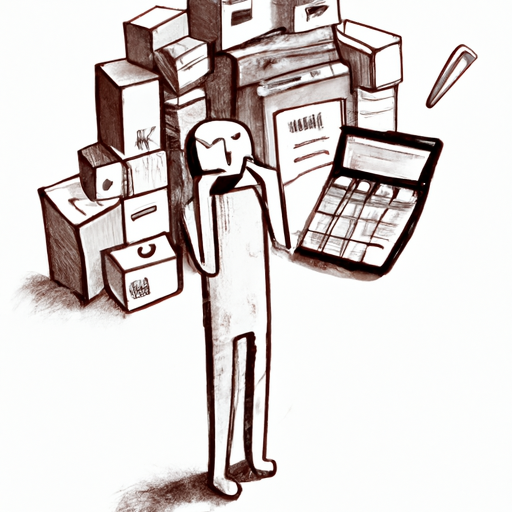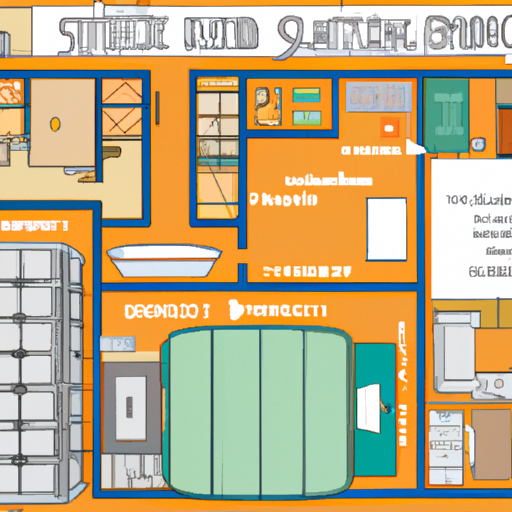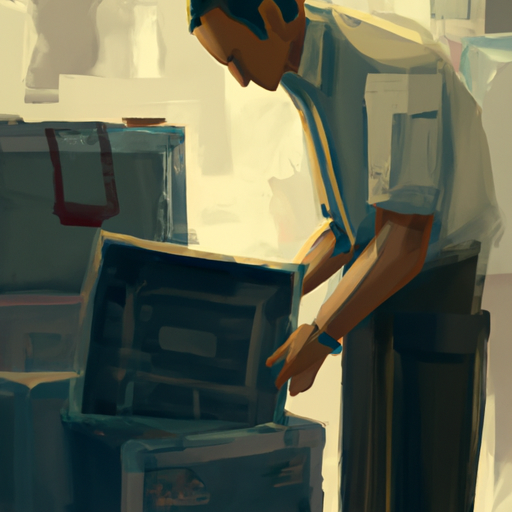This article discusses common mistakes homeowners make when downsizing, including underestimating the time and cost involved, holding on to emotional attachment, and failing to properly plan and organize. It includes tips for a smooth transition, such as considering lifestyle and comfort, assessing storage needs, and using creative storage solutions.
Downsizing your home can be an important life decision, whether you’re empty nesters looking to simplify or people looking for a more manageable space. While the idea of decluttering and simplifying your life may sound appealing, it’s important to navigate the downsizing process carefully to avoid common mistakes that can lead to unnecessary stress and complications. In this article, we’ll discuss some key mistakes to avoid when downsizing, providing valuable information and tips to help you make a smooth transition. From planning and emotional connections to financial pitfalls and organization, we’ll cover a range of areas to make sure your downsizing journey is successful and enjoyable. So, if you’re considering downsizing, read on to learn how to avoid these common pitfalls and make the most of your downsized space.
- 1. Downsizing Planning: Avoid These Common Mistakes
- 2. “Avoiding Emotional Attachments: Mistakes to Avoid When Letting Go”
- 3. “Financial pitfalls: mistakes to avoid when downsizing”
- 4. “Organization and Storage: Top Mistakes to Avoid During the Downsizing Process”
- 5. “Keeping Comfortable: Mistakes to Avoid to Ensure a Smooth Downsizing Transition”
1. Downsizing Planning: Avoid These Common Mistakes

Downsizing your home can be a daunting task, but with proper planning, it can also be an opportunity for a fresh start and a more streamlined lifestyle. However, many homeowners make common mistakes during the downsizing process that can lead to unnecessary stress and frustration. To ensure a smooth transition, it’s important to avoid these mistakes when planning your downsizing.
First of all, one of the biggest mistakes people make is underestimating the amount of time it will take to downsize. Sorting through the things you’ve accumulated over the years and deciding what to keep, sell, give away, or throw away takes a lot of time. It is very important to start early and give yourself enough time to consider each point carefully. Rushing the process can lead to regrettable decisions or too much clutter in your new space.
Another common mistake is failing to create a realistic downsizing plan. It is very important to assess your needs and prioritize what you really need and want in your new home. Make a list of necessary things and determine
2. “Avoiding Emotional Attachments: Mistakes to Avoid When Letting Go”

When downsizing your home, one of the most common mistakes to avoid is keeping emotional attachments. Letting go of sentimental items can be incredibly difficult, but it’s critical to make practical decisions when downsizing.
Many people find it difficult to part with things that have sentimental value, such as family heirlooms or gifts from loved ones. These objects often carry memories and emotions that are hard to let go of. However, clinging to sentimental clutter can quickly lead to a cramped and cluttered living space, defeating the goal of downsizing.
To avoid this mistake, it’s important to approach the downsizing process with a practical mindset. Start by setting boundaries and limits on what sentimental items you can keep. Identify the things that truly have significant value and bring you joy, not the things that just take up space. Consider whether you can preserve the memories associated with the item through photographs or digital means rather than keeping the physical object.
Another useful strategy is to involve your
3. “Financial pitfalls: mistakes to avoid when downsizing”

When downsizing your home, it’s important to be aware of the potential financial pitfalls that may arise. By avoiding these common mistakes, you can ensure a smooth transition and make the most of your new, smaller space.
One of the most significant financial pitfalls to avoid is underestimating the cost of downsizing. While you might assume that downsizing automatically means saving money, that’s not always the case. In fact, there are several expenses that can catch you by surprise if you’re not properly prepared. This can include real estate agent fees, moving costs, closing costs and potential repairs or renovations to your new home. To avoid any financial surprises, it’s important to carefully research and budget for these expenses.
Another common mistake is that you fail to properly estimate your storage needs. Downsizing often means sacrificing storage space, so it’s important to estimate how much storage you need before moving. If you overlook this aspect, you may need to rent additional storage units or permanently
4. “Organization and Storage: Top Mistakes to Avoid During the Downsizing Process”

When downsizing your home, one of the key areas to focus on is organization and storage. Mistakes in this aspect can lead to clutter, frustration, and even the inability to fully enjoy the new, smaller space. To help you manage this process with ease, here are some common organization and storage mistakes to avoid:
1. Underestimating the amount of stuff: One of the biggest mistakes people make when downsizing is underestimating the amount of stuff they have. It is important to carefully go through each room and assess what you really need and what you can give up. Be ruthless about decluttering and ask yourself if the item serves a purpose or brings you joy. Remember, the goal is to simplify your life and make the most of your new space.
2. Lack of a plan: Downsizing requires careful planning, especially when it comes to organization and storage. Before you start packing, make a detailed plan of what will go where in your new home.
5. “Keeping Comfortable: Mistakes to Avoid to Ensure a Smooth Downsizing Transition”

When downsizing your home, it’s important to ensure a smooth transition to maintain comfort in your new space. To avoid possible mistakes that can disturb your comfort, pay attention to the following tips.
1. Ignoring your lifestyle. One of the common mistakes when downsizing is not taking into account your lifestyle and daily habits. Take the time to assess your needs and prioritize the features that contribute to your comfort. For example, if you like to host get-togethers, make sure your tiny house has enough space for entertaining. By understanding your lifestyle requirements, you can make informed decisions about what to keep and what to let go.
2. Underestimating storage needs: Downsizing often means giving up storage space. However, underestimating your storage needs can quickly lead to a cluttered and cramped living environment. Before moving, carefully evaluate your belongings and determine what you need to keep. Maximize storage potential by investing in multi-functional furniture, using vertical space and exploring creative storage solutions to get the most out of your reduced space
In conclusion, downsizing your home can be a difficult process, but by avoiding common mistakes, you can ensure a smoother transition. Planning ahead and avoiding emotional attachment is critical to getting rid of unnecessary things. Additionally, being mindful of financial pitfalls and staying organized throughout the downsizing process are essential to a successful transition. Finally, staying comfortable and taking the necessary steps to ensure a smooth transition will help you settle into your new, smaller home with ease. By learning from these common mistakes, you can make your downsizing journey a positive and rewarding experience.
 Purex find
Purex find